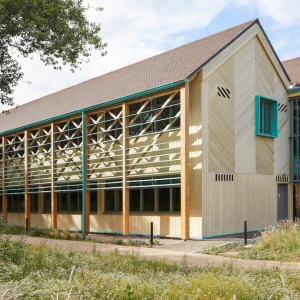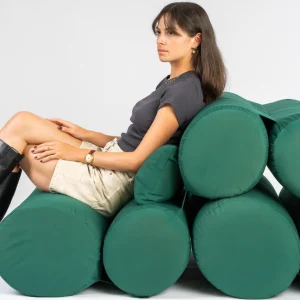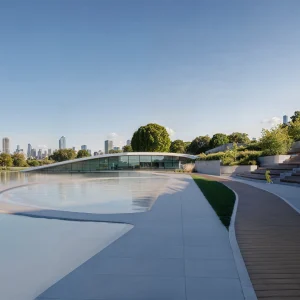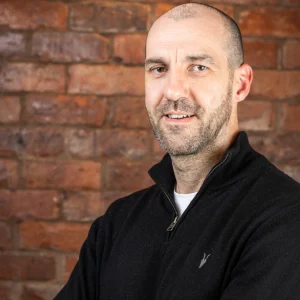Barcelona-based designer Javier Mariscal thinks and draws fast: for his first major show in the UK at the London Design Museum, Drawing Life, 320 drawings are hanging in the entrance. The installation (pictured above) is intended to be like a ‘shower of images’: having digested extraneous mental imagery visitors are then free to look at Mariscal’s past projects. The show has created a new buzz around an artist-designer who has the ability to catapult the viewer into a world of angular, yet friendly characters and intense colours.
Mariscal is prolific. His handwriting, whether applied to words or images, has become synonymous with many companies and organisations across the world. Mariscal has designed brands for a city (Barcelona), a political party (the Swedish Socialist Party), covers for magazines (including the New Yorker), and mascots perhaps most famously, Cobi for the Barcelona Olympic Games in 1992.
His work has often moved into three dimensions, with furniture collections for manufacturers such as Moroso and Magis. Recently he designed the interior for the Barcelona branch of clothing company Hennes and Mauritz, the first time the company has used an outside designer. Located in a grand historic building, the project drew out an important principle for Mariscal, which is to provide access to the best for poorer sections of society: ‘many young girls have never been inside a bourgeois palace, but now they can feel like Marilyn Monroe’.
In August Conran launches Well Considered, a new collection of furniture specifically aimed at the younger generation on a budget, with packaging by Mariscal that reinvents the Conran logo in the designer’s handwritten script. Sebastian Conran describes the speed of the project: ‘Mariscal was so enthusiastic that in a very short time he produced a large quantity of drawings and ideas that made the whole development process incredibly fast from inception to completion’.
Though Mariscal has often tackled the design of logos, his graphic design work is sometimes dismissed as calligraphy rather than being regarded as serious graphic design. Nonetheless, typography is fundamental to his work. ‘Letters are like the bricks of architects. They can communicate a lot of expression,’ he says. In many ways, his work is the equivalent in design to Italo Calvino’s short novel Invisible Cities, carving a space for the imagination and the dream where everything is possible.

The title of his exhibition at the Design Museum expresses the importance of hand drawing in Mariscal’s approach, and more than most designers, the direct relationship between his attitude to life and his graphic style. Although Mariscal is often asked to design for children – for example, his Me Too collection for Magis – he believes there should be no division between design for different generations. ‘The world would change if large companies learned how to play like children,’ he says.
Mariscal is also ready to make fun of those who take themselves too seriously: the installation includes a temple built from plastic furniture, symbolising the temple of design. For Blueprint’s Paper City exhibition at the Royal Academy, we asked Mariscal to apply his thinking to the metropolis of the future. The result (pictured above) is a view of a city from above, where transport systems appear like slides, and people whizz between towers in high-level transparent tubes. Paper City: Urban Utopias includes 44 images of imaginary cities by designers, architects and artists from around the world, and it is revealing that Mariscal is one of just a few who have drawn people as part of their vision.
Paper City: Urban Utopias is at the Royal Academy from 31 July to 27 October: www.royalacademy.org.uk; Mariscal – Drawing Life is at the Design Museum 1 July-1 November: www.designmuseum.org






